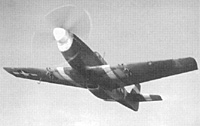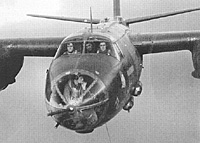 Aerial gunnery is 90 percent instinct and 10 percent aim.
Aerial gunnery is 90 percent instinct and 10 percent aim.
- --
Captain Frederick C. Libby, 24 victories
The most important thing in fighting was shooting, next the various tactics in coming into a fight, and last of all, flying ability itself.
- --Lt.-Col. Billy Bishop, 72 victories
Fuel-low. Ammo-low. A Big Friend is limping home on three engines, and there are yellow-nosed Focke Wulfs in the neighborhood. Your wingman is gone, and your P-47 is running rough. Do you stay and risk getting sucked into a dogfight or do you separate now while you can? These are the gut-wrenching decisions good tactical-level air combat games force players to make. At this level of gaming and in this arena, players are intimately involved in the fates of their pilots and are fairly knowledgeable about the characteristics of their aircraft. Therefore, any combat resolution system must replicate history and reality with a fair degree of accuracy.
Close tactical level air combat has been a surprisingly popular topic among designers. Over the years, many different combat systems have evolved, covering the peculiarities of the many different air wars, from the duels over trenches of the First World War, to the complex, high-tech environment of a jet fighter furball. This article will examine the evolution of air combat systems, in particular focusing on how aerial gunnery is simulated in World War II fighter combat.
TACTICAL AIR COMBAT SYSTEM: FUNCTION
Every tactical air combat system must answer four questions:
- 1. Hit probability Was the target hit?
2. Hit total-How many times was the target hit?
3. Hit location-Where was the target hit?
4. Hit effect-What was the effect of each hit on the target?
To examine these questions, let's look at a simple air combat game: TAHGC's B-17, Queen of the Skies (1983).
1. Hit probability resolves whether an attacker succeeds in actually striking the target. Many factors affect hit probability, such as pilot experience, attacker's maneuvers, defender's reactions, angle of attack, weather, etc. Thus, in B-17 an enemy fighter has a 1-in-3 chance of hitting the lumbering bomber from 12 o'clock; return fire from the B-17 has only a 1-in-6 chance of hitting the enemy fighter; an ace gunner on board improves the odds to 1-in-3.
2. Hit total simply determines how many shells or bullets strike the target. Air combat games often quantify hits into "bursts" or some abstraction of a multiple-round hit because it would be impractical to track the effect of every individual bullet. Moreover, most games resolve hit probability and hit total simultaneously-obviously, the higher the chance of obtaining a hit, the higher the probability of obtaining multiple hits. If a German fighter were to attack a lone B-17 from the 6 o'clock position, it would have a no-deflection shot at a large and relatively slow target, allowing a long time to aim and put in a telling burst-in B-17, it's possible to obtain 10 hits from an FW-190 attacking from 6 o'clock. By contrast, an attack from 12 o'clock, with a high closing speed and small target profile, usually nets only two hits.
3. Once hits have been inflicted, we must find out where the target was hit. Even a simple game like B-17 can boast a very intricate hit location table. Hits can be obtained in the nose, pilot compartment, wings, bomb bay, radio room, waist and tail. Hit location can often influence the severity of hit effects. Obviously, a few hits in the pilot compartment can affect the plane's performance much more severely than many hits in the radio room.
 4. Once hit locations have been determined, the effects of those hits can be determined. For example, each location of the B-17 has many different hit effects. A hit to the wing can cause a fire to the fuel tanks (usually fatal) or damage to an engine (possibly causing a runaway engine, which if unfeathered will force the crew to hit the silk); a hit to the radio room can destroy the rafts (a water landing in the frigid North Sea amounts to a death warrant).
4. Once hit locations have been determined, the effects of those hits can be determined. For example, each location of the B-17 has many different hit effects. A hit to the wing can cause a fire to the fuel tanks (usually fatal) or damage to an engine (possibly causing a runaway engine, which if unfeathered will force the crew to hit the silk); a hit to the radio room can destroy the rafts (a water landing in the frigid North Sea amounts to a death warrant).
As mentioned above, every tactical air combat system answers these four questions, and is based on three factors: the firepower of the shooter, the ability of the shooter to hit the target, and the survivability of the target. All three are quantified and compared. Thus, a simple CRT would determine hit probability (range to target, experience of shooter, target defensive maneuvers, etc.), followed by kill probability (destructiveness of the weapons compared with survivability of the target).
The most common combat system relies on two die rolls, the first to resolve both hit probability and hit total (to-hit roll), and the next to resolve both hit location and hit effect (to-kill roll). This type of combat system is used in many ways by many different games, not just air combat games (e.g. the Squad Leader/Advanced Squad Leader system, the Panzer/MBT system, Tobruk).
Tactical Level Air Combat A Survey of Combat Resolution Systems
- Introduction
First Generation Systems
Second Generation Systems
Third Generation Systems and Conclusion
Back to Table of Contents -- Against the Odds vol. 2 no. 2
Back to Against the Odds List of Issues
Back to MagWeb Magazine List
© Copyright 2003 by LPS.
This article appears in MagWeb.com (Magazine Web) on the Internet World Wide Web.
Other articles from military history and related magazines are available at http://www.magweb.com
* Buy this back issue or subscribe to Against the Odds direct from LPS.
